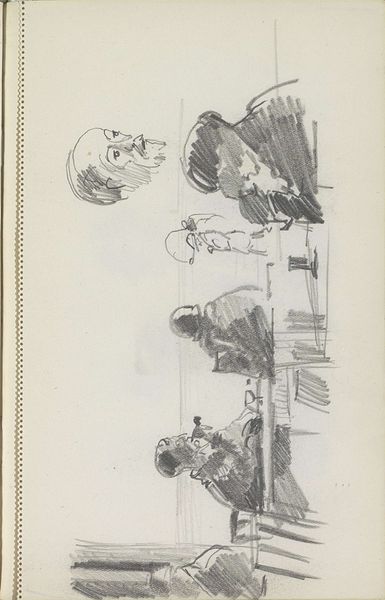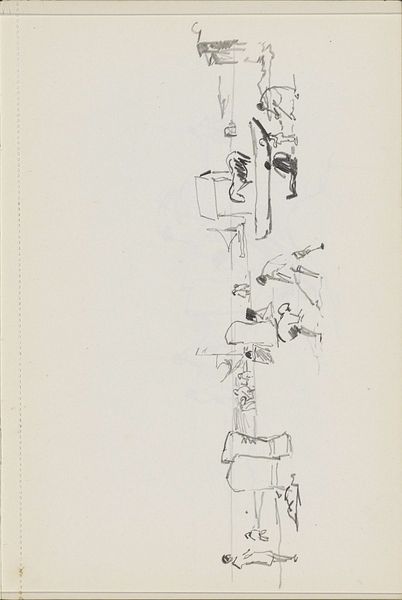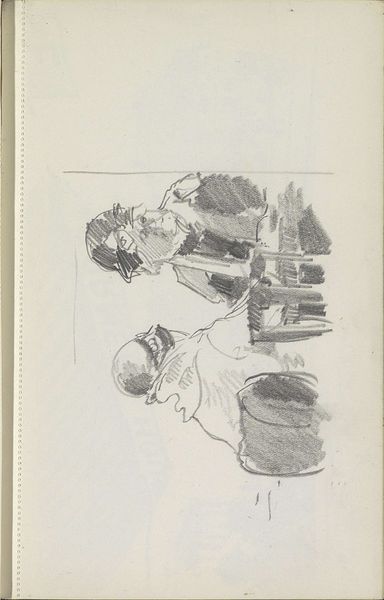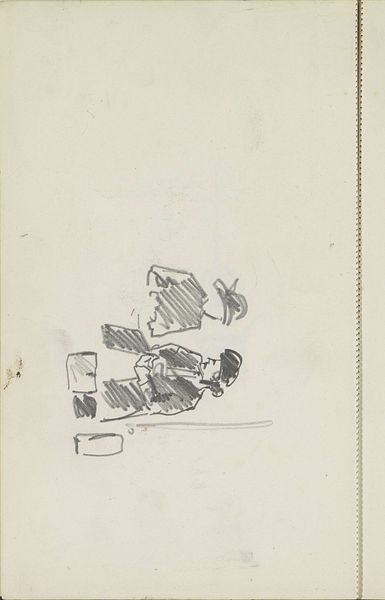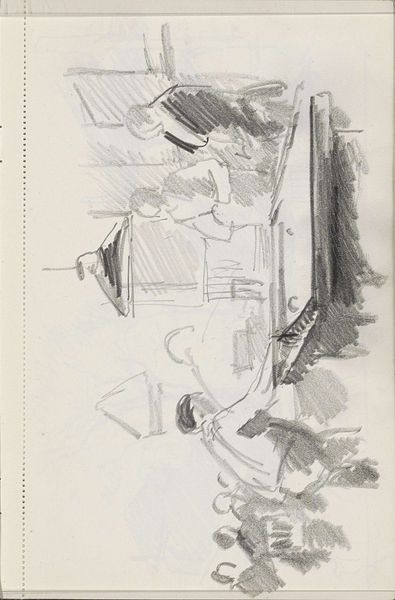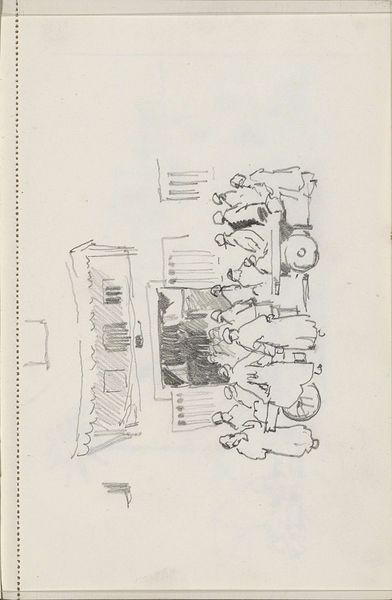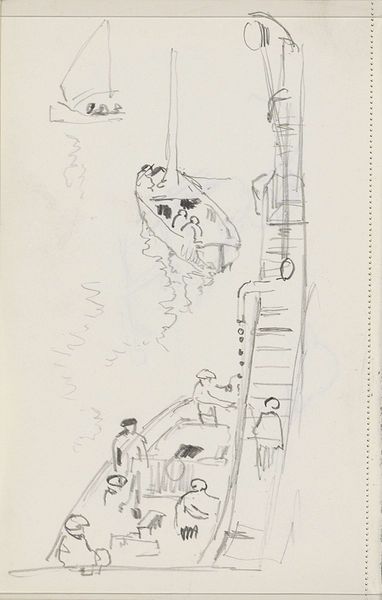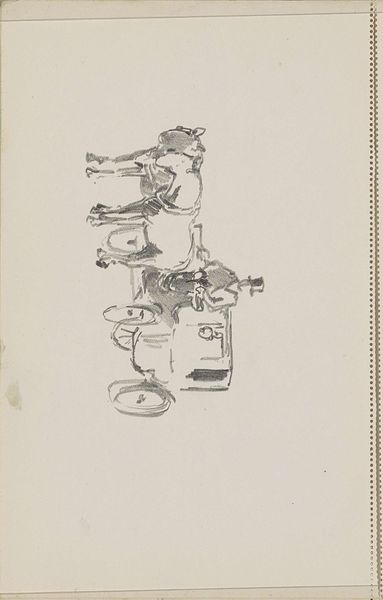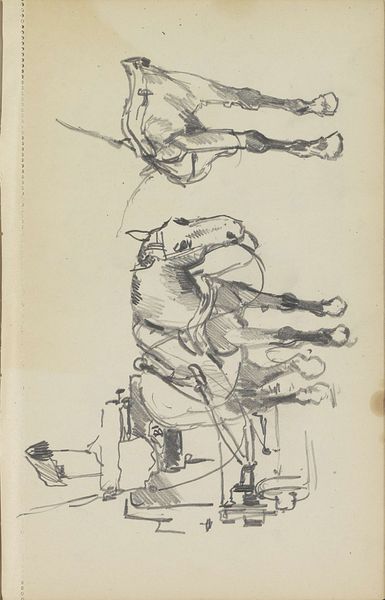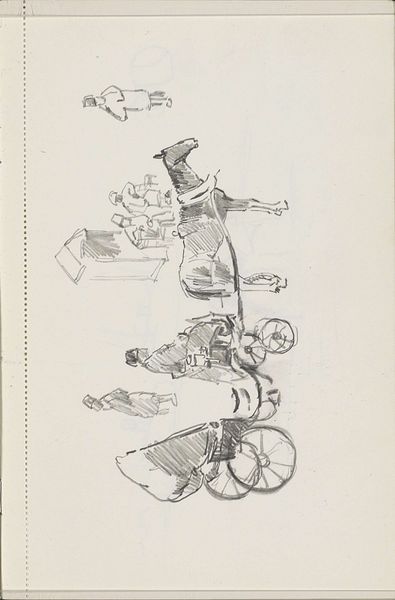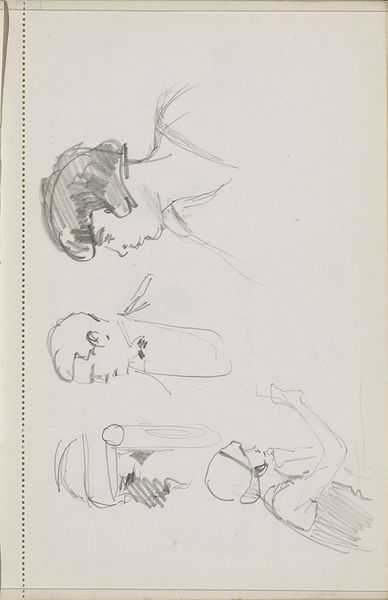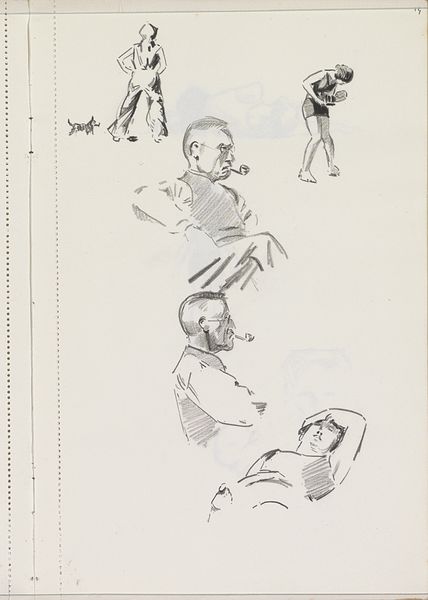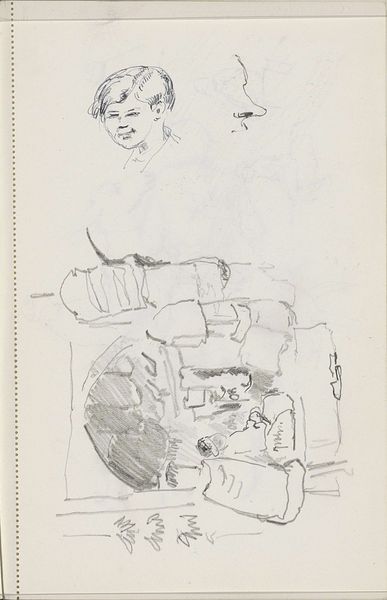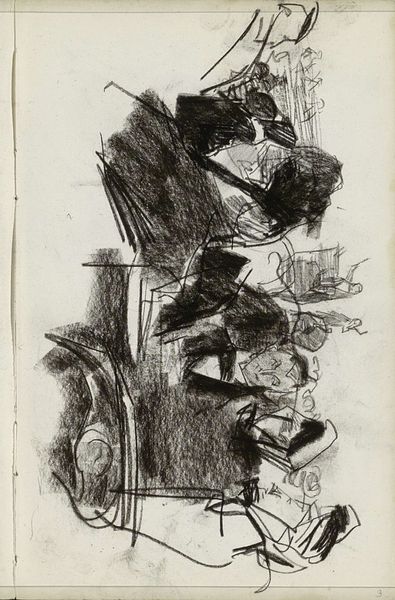
Studieblad, onder andere met een man in een leunstoel c. 1935 - 1936
0:00
0:00
drawing, paper, pencil
#
portrait
#
drawing
#
pencil sketch
#
figuration
#
paper
#
pencil
Copyright: Rijks Museum: Open Domain
Curator: Here we have Cornelis Vreedenburgh’s “Studieblad, onder andere met een man in een leunstoel," a study sheet made circa 1935 to 1936, using pencil on paper. It resides here at the Rijksmuseum. Editor: Immediately, I’m struck by the intimacy. These fleeting sketches feel like catching glimpses of people in unguarded moments, rendered in delicate, almost hesitant pencil lines. Curator: That intimacy speaks, perhaps, to the artist’s process. As a study sheet, this isn’t intended for public consumption; it's a space for exploration, for working through ideas. Note the repetition of figures, different angles, attempts to capture posture and expression. Editor: Yes, it's like a visual record of Vreedenburgh’s thought process, almost like we're looking over his shoulder as he considers different perspectives on a central theme, a person relaxing in an armchair. I also wonder about the socio-political implications: during this period in the 1930s, what did rest and relaxation represent, given the turmoil and growing anxieties in Europe? Curator: That's a valid question to consider, though in Dutch art circles during that time, themes of daily life often transcended overt political messaging. The composition also provides insight. The loose arrangement of figures on the page feels almost casual, yet the careful rendering of light and shadow reveals a deep understanding of form. Editor: It’s true; the almost haphazard arrangement actually draws the eye. And the lack of clear context is very powerful. Each isolated figure has its own energy, evoking very different feelings: calm contemplation, perhaps, but also maybe isolation and anomie in a changing urban world. I also find myself wondering who these individuals were – the act of witnessing invites me to project my own assumptions onto them. Curator: Perhaps that invitation to project is precisely the point. By leaving these figures undefined, Vreedenburgh invites the viewer to consider broader themes of humanity. The universal experience of seeking rest, of finding comfort – these are things that transcend any particular political moment. Editor: Maybe. But art doesn't exist in a vacuum; what constitutes universal experience, and who has access to such rest and comfort? The sketch, therefore, becomes a quiet record of both individual and collective identity in its moment. Curator: An interesting paradox. This peek into Vreedenburgh's personal working method also holds a mirror up to society at large. Editor: Ultimately, seeing it as a testament to both the intimate act of creation and the broader implications of representation within culture.
Comments
No comments
Be the first to comment and join the conversation on the ultimate creative platform.
